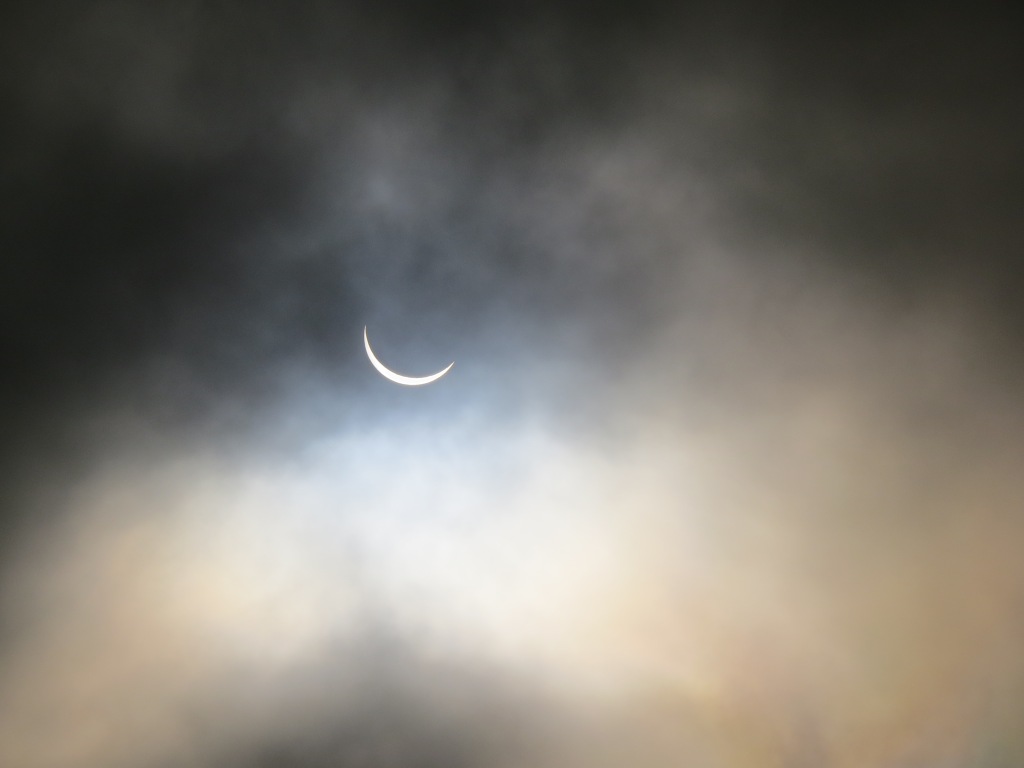It’s midwinter. The full moon at midnight is dazzlingly bright and almost directly over our heads. The Moon looms large in our collective conscience. Lunacy is everywhere in our words, phrases and popular songs: harvest moons, honeymoons, moonshine, moonlighting, over the Moon, once in a blue moon, many moons, moonlight flits. In November we get a ‘woodcock moon’. Migrating woodcock use it to find their way across the North Sea to the east coast of Britain. In the morning they are often found in unexpected places; behind walls, in gardens or even on window ledges, as they recover from their exertions. Despite its influence on us the Moon doesn’t feature much in our superstitions – although my mother thought it was unlucky to see a new moon ‘through glass’.

The Moon is 385,000 km away from us, 30 times the diameter of the Earth, and it takes light from the moon 1.3 seconds to reach us. The movements of the Moon and the Earth are not particularly complicated. Almost everything goes in the same direction. Looking down on the Earth from above the North Pole, the Earth rotates in an anticlockwise direction. The Moon orbits the earth every 27.3 days, in an anticlockwise direction, and the Moon and Earth together orbit the sun – in an anticlockwise direction. The direction of rotation of the Earth means that every ‘object’ in the sky: the Sun, the Moon, the planets, stars and galaxies, rises in the east and sets in the west.
To observers on Earth the Moon looks bigger at the horizon than it does overhead. The reason for this illusion is under debate. The truth is, the Moon measures slightly less at moonrise and moonset because it is 4,000 miles farther away from us at those times than it is at midnight. The width of the Moon is roughly equivalent to that of Australia and its total surface area is about the same as North and South America combined. Contrary to appearances, the lunar surface is not very reflective. It is comparable to ‘worn asphalt’ but appears bright to us in an otherwise black sky.
As it orbits us every 27 days or so the Moon seems to progress slowly across the night sky from right to left, from west to east, through the various constellations of the Zodiac. At the time of a new moon the Moon lies directly between us and the Sun and is briefly invisible. As it passes beyond the Sun it forms a thin crescent lit from the right which follows the Sun to the western horizon at sunset. A week after a new moon it reaches the first quarter when it is half-lit and starts to lag a bit farther behind the Sun. In the second week the waxing ‘gibbous’ Moon grows until it is a fully illuminated disc, a full moon. This happens when the Moon, Sun and Earth are once again lined up – but this time the moon is on the opposite side of the Earth with the Sun shining directly on the whole of the Moon’s disc. At full moon the Moon rises as the Sun sets and at midnight it is directly overhead. In the northern hemisphere we are used to seeing the crescent moon lit from the side but in the Tropics the Moon is lit from below and the crescent Moon lies on her back.
The crucial secret to understanding time and the apparent movements of the Sun and the Moon is that we on Earth are moving at terrific speed around the Sun. Although the Moon completes an orbit in about 27 days in sidereal (star) time, the Earth has moved during that time, placing the Sun, from our viewpoint, in a different part of the sky. Because of this the Moon has to travel for another 2 days to line up with the Sun and become another new moon. This means that on Earth the interval between one new moon to the next is 29 days and not the 27 sidereal days taken for one complete Earth orbit by the Moon.

There is another time anomaly also related to the Earth’s movement. This has to do with the length of our day. In sidereal time the Earth rotates once every 23 hours and 56 minutes, not every 24 hours. The Earth is always moving around the Sun and from a fixed position on the Earth’s surface – your house for example – the Sun rises 4 minutes later every day than the time taken for one complete Earth rotation. Clearly we can’t have a system of time that is dissociated from sunrise and sunset so our days are not determined by one rotation of the Earth but instead by the time from from one sunrise to the next – 24 hours.
This linkage of time to the Sun means that the stars don’t stick to Earth time either and the constellations above us move slowly westwards throughout the year by the same missing 4 minutes every day. Eventually, 12 months later, they return (roughly) to their starting positions (4 minutes x 365 = 24.3 hours).
Confused?
Despite the outwardly majestic progress of these event and the rock solid feel of terra firma beneath our feet, the speeds involved are jaw-dropping. The Moon orbits the Earth at a brisk 1 km/sec but the Earth and Moon together are hurtling round the Sun at 30 km/sec. That’s 67,000 mph in old money.
While we are vaguely aware of the Moon’s phases, something additional has to happen before we really pay attention. Lunar eclipses are relatively common because the Earth casts big shadow that the Moon can stray into. While these events often make the news it is usually well down the agenda. Solar eclipses on the other hand are much rarer and hit the headlines.
The solar ecliptic is the plane of Earth’s orbit around the Sun. All the planets of the Solar System lie on the solar ecliptic. Although close to the ecliptic, the Moon’s orbit round the Earth is very slightly angled at 5°. If the Moon orbited us in the plane of the solar ecliptic we would have solar eclipses all the time – which would be fun. Instead we have to wait for the rare occasions when the paths of the Moon and Sun intersect. The most recent eclipse visible from the UK was a partial one in March 2015. The last total eclipse was in Cornwall in August 1999.
At these moments we are compelled to contemplate the intimidating scale of celestial events. How odd that the Moon, 385,000 km away, happens to be just the right size to cover the sun completely. But the Moon is slowly moving away from the Earth at the rate our fingernails grow. Eventually it will be too small to totally cover the sun and all eclipses will be annular. We just happen to be alive while it can still cause a total eclipse.


Famously, we on Earth only ever see one half of the Moon; the near side. The invisible far side is not actually a ‘dark side’. It gets as much sunlight as the rest of the Moon but we never see that side from Earth. This is because the Moon’s slow rotation is in synchrony with its orbit so that the same hemisphere is always facing towards us. Our moon is the largest moon relative to the size of the planet it orbits and almost all the other moons in the Solar System are smaller than it.
In fact our moon is so big that the Earth and Moon together can be seen as a binary planet system. The centre of rotation of the Earth and Moon does not lie at the centre of the Earth. Like an adult swinging a large child in a circle, the Moon is heavy enough to make the Earth lean backwards slightly to compensate.
The Moon’s fixed plane of orbit has one other effect. Like the sun, the Moon’s elevation in the sky changes with the seasons. Pleasingly, this is the reverse of the Sun’s positions. The full moon at its zenith in midwinter (as it is now) is high in the heavens while in midsummer it stays low down towards the horizon.
It is fortunate that the word moon has so many rhymes. Where would the popular song be if we called it Selene, Luna – or Cynthia?

